STEM PD: Expert Advice
A MiddleWeb Blog
Imagine you’re a school leader and you set out to deliberately send your STEM initiative into a nose-dive. How would you do that? Simple. Just make sure your teachers are underprepared, under-resourced, and under-supported.
No initiative works if the implementers are not ready to perform at high levels. The question is, how do you accomplish that? How do you successfully involve and prepare teachers for facilitating STEM lessons in their classrooms? That may be the most important question you ever ask about implementing a STEM program in your school or district.
There’s obviously no “one size fits all” answer to STEM teacher development, but I know someone who has a good handle on a proven process. She’s one of the most perceptive teacher trainers and developers I know.
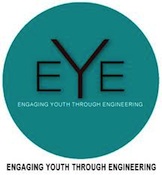
Most important from my standpoint, Judy is the person who, for five years, provided on-site professional support while teachers were actually implementing intensive, integrated STEM modules in Mobile County Public Schools. She also coordinated support from the business community so that volunteer representatives from the area workforce were present and involved in the actual module implementation.
Judy provided this on site, hands-on support to each math and science teacher in two large middle schools, each quarter during the introduction of each STEM module. Through that experience, Judy was able to analyze and continually refine the STEM professional development process to fill in learning gaps and strengthen skills teachers needed.
Back to my first question above: How do you successfully involve and prepare teachers for facilitating STEM lessons in their classrooms?
My obvious, emphatic response is: Employ a highly competent, perceptive, and committed STEM teacher developer who will work with you for the long haul.
STEM PD: Advice from an expert
What follows is Judy Duke’s explanation — in her own voice — of some things she’s learned about effective professional development for implementing STEM.
When we began this STEM initiative, we knew we would have to provide strong professional development for teachers. The concept of using engineering design challenges to apply math and science content was new. We were going to have to change mindsets as well as teach teachers how to do the work.
1. Build teachers’ belief in STEM and its value.
Before we even began writing the STEM modules, we brought the math and science teachers together and, with the help of some business leaders, provided teachers with information on what the workforce needs are in our city and region. Earlier, several members of the EYE staff and business folk had traveled to Boston to observe the Engineering is Elementary curriculum in action. We saw how well it was working there and were able to give teachers concrete examples of STEM effectiveness and results beyond our own borders. We wanted to give teachers a purpose and get buy-in. They had to believe that this is important work.
2. Involve teachers in the development work.
Next we pulled teachers back together and gave them time to work in small teams to examine the objectives for math and science. They looked at those objectives for the quarter in which they would teach the STEM module and began to think together about how the math and science could coordinate. (In some later modules the math and science content would be interdependent, but initially we focused on cross-content coordination.)
Teachers then used the Internet to research sources for engineering challenges that were already out there and might be used in their STEM curriculum. We made it clear to the teachers that they were an important part of the process that we were all learning together.
The writers took information the teachers gave and began developing modules, starting very simply at first. Initial modules consisted of 2 to 3 math and science lessons centered around the same engineering design challenge.
One lesson they suggested was a wind turbine. In science, kids would be studying weather and wind patterns. The engineering challenge was to design a blade assembly for the turbine – variables included pitch, shape, length, and number of blades. Students studied wind patterns and learned about wind as an alternative energy source. They then designed the blade assemblies. In math they used a computer simulation to change the altitude of the wind turbine, the blade length, and the wind speed. They studied how those variables impacted the amount of electricity produced by the turbine and identified patterns in the data using graphs.
While teachers participated gamely, we knew what they were thinking: “This, too, shall pass.”
3. Provide initial PD in module specific information and skills.
While teachers participated gamely, we knew what they were thinking: This, too, shall pass. During our first professional training in STEM we again spent a lot of time getting into the workforce development needs, the purpose of the STEM modules, and the value of teaching in this way. We explained the engineering design process and how well the approach fit with other content areas. We stressed the wide applicability of this initiative, and kept creating a mind shift toward teaching the STEM way, using engineering design strategies.
Then we provided training on how to specifically implement a module. We went through the whole module process, with the teachers actually playing the role of students and participating in the design challenge so they could see where students might have problems.
When teachers actually taught the module, I went to the school and provided support, along with writers and other support people. We helped set up equipment and we were in the classrooms and available to help the lessons go smoothly. I taught the first class if a teacher wanted me to model the process.
Our writers assisted students as needed and made copious notes of how well the process as written seemed to work. Businesses sent employees to observe and to help as well. One school board member came to the school and was so intrigued that she stayed an entire day and provided assistance to student teams. For teachers, support comes in many forms and provides encouragement to continue the journey.
4. Gather teacher feedback and input for STEM module redesign.
Our second professional development session began by debriefing the first module implementation and getting formative feedback. How did it work? What might make it work better? Again we involved teachers in the development as we used their ideas to redesign the module for the next go-around.
Teacher feedback is critical. We listened carefully to teachers and their needs and asked, “What would you need this curriculum to include if you had no access to professional development?” With their input, the modules began to look more like curriculum guides with detailed procedures.
From teacher feedback we also learned that we needed to include more language to help teachers make specific points that would lead to the desired student takeaways. Teachers also pointed out the need for some teacher background materials so that both math and science teachers had access to what they needed to know in both content areas.
Because of teacher feedback and input our expectations for the modules grew. As we began to learn more about this, we realized that for the modules to be true STEM curriculum, the content needed to be more closely interwoven. Our modules became richer as math and science became more interdependent, and as math and science teachers spent some time during each module in each other’s classrooms working together with students.
5. Keep the teacher learning going.
Now we are six years into this STEM module development process and our focus is shifting toward implementation. We are bringing more schools aboard as well as more support personnel.
If teachers have already implemented a module and we have revised it, we still spend at least half a day going through it with them and explaining any changes. For new teachers we do a full day of professional development on the module. We include more time to discuss content background as well as time to share module implementation experiences. During that time we make sure all teachers are on the same page with vocabulary such as velocity and speed, and what kinds of graphs might be used to compare the two. We also debrief every workshop to help us redesign the next training.
One especially helpful way of getting feedback is to have full day sessions where we invite teachers from all implementing schools (now we have four) to come and give us input and ideas on what would make the modules stronger, clearer, and more usable. When you think about it, it’s hard to separate teacher professional development from our own professional development as curriculum writers and program implementers.
6. Change the PD content depending on teacher needs.
One thing I’d like to caution is that professional development can never become static. The information and skills teachers need one year may shift before the next year. If you don’t talk with the teachers and work with them, then you won’t know what they need.
If I could throw out all constraints (such as limited time allotted to professional development), here are some things I’d focus on in teacher development sessions:
• Lesson management skills. What should a teacher be doing at a given point in the lesson? Where should she/he be in the classroom?
• Teamwork skills. How do you teach students to work together effectively? For that matter, how do teachers learn to work together effectively? I’d like to see math and science teachers break through the walls of their content silos.
• Materials management. This is particularly important for math teachers who may not be used to managing hands-on materials and thinking through the distribution and clean-up process.
• Deeper content understanding. Teachers need to teach from an overflow of knowledge about the content.
• More opportunities for teachers to work with business and industry. Teachers need to see how what they are teaching plays out in the real world.
• Guiding teachers to repurpose existing lessons. Teachers could take the good math and science activities they already do and tweak them so that they become engineering challenges that require students to apply their learning. Lessons become richer if they include a real world challenge.
If this sounds like information on STEM module development rather than teacher professional development, it’s because the two are inseparable. Teachers must own the curriculum. Professional development, the way we do it, leads to that ownership. Best of all, we all grow – together – as we hammer out the curriculum and continue its development.

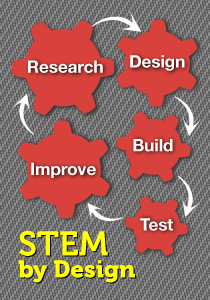
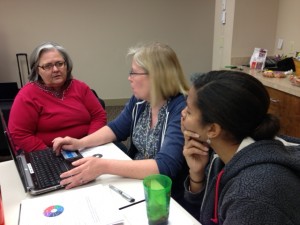
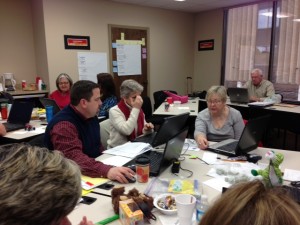
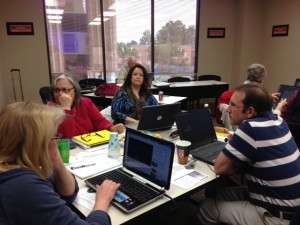

































Judy’s explanation of how the professional development and module development flow together makes perfect sense. I am left wondering if there are other districts out there thinking about or already implementing this approach.
That’s what I’m wondering as well; or, are any districts/schools implementing any approach that works well for them?